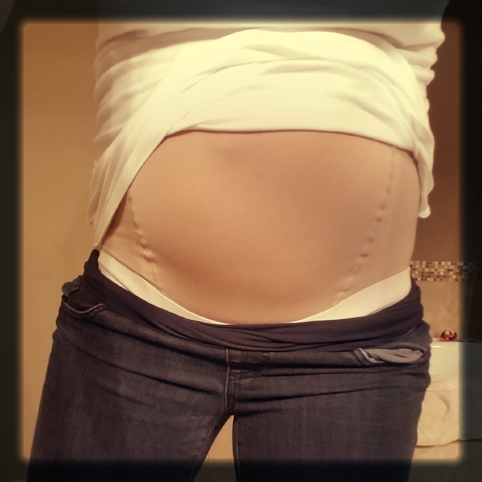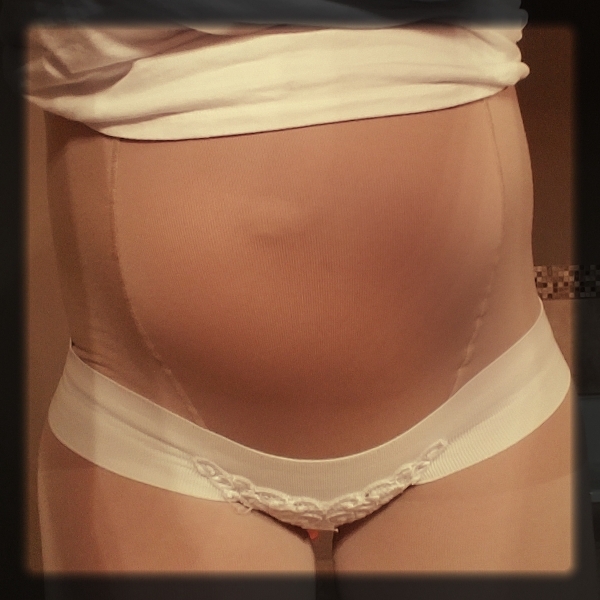Managing Varicose Veins During Pregnancy: Tips and Insights
My daily attire: full length compression hose, V2 Support and pants
By Amanda Fisher, pelvic floor therapist with Empower Your Pelvis in Kansas City
This is what the V2 Support looks like. What I like to call, my "jock strap".
Varicose veins are a common issue during pregnancy, affecting many women in different ways. Some may notice them on their legs, others as spider veins, and some may even experience them in the pelvic area, labia, or as hemorrhoids. As someone who has dealt with varicose veins in both my legs and pelvis during pregnancy, I understand the discomfort and challenges they bring.
Understanding Varicose Veins in Pregnancy
Varicose veins occur when your veins become enlarged, swollen, and often painful. During pregnancy, this can happen due to increased blood volume and the pressure of your growing uterus on the veins in your pelvis and legs. For some, like me, this can lead to significant swelling in the labial area, which can be quite uncomfortable.
Coping with Pelvic Pressure
If you're pregnant and experiencing pelvic pressure or heavy legs, there are effective ways to manage these symptoms. For me, the pressure begins as soon as I get out of bed in the morning. Gravity causes the swollen tissues to feel even more intense. Urinating can sometimes be a challenge due to the increased swelling, so it’s important to remember to breathe and avoid straining. As I often say, "Just breathe...your pelvic floor will thank you."
To help manage pelvic pressure, I rely on the V2 Support. This support garment is a game-changer for alleviating that heavy feeling in the pelvis. I affectionately refer to it as my "jock strap," and it's been an essential part of my daily routine, especially during my morning walks with my dog, Izzie. Walking is a fantastic exercise for promoting blood circulation in the pelvis and is beneficial for both you and your baby.
Tips for Managing Leg Swelling
In addition to the V2 Support, I invested in high-quality full-length compression hose. These have been a lifesaver for reducing leg swelling and pain. If you’re pregnant during the warmer months, maxi skirts and dresses are your best friends—they allow you to stay cool while still wearing your compression hose. When shopping for compression hose, I recommend getting measured by a professional to ensure the right fit. Some local vein clinics offer free measurements, which is a great resource.
Throughout the day, be mindful of taking breaks from prolonged sitting or standing, as either can worsen discomfort. Incorporate belly breathing exercises to help circulate fluids in the pelvis and abdomen. Elevating your feet when possible can also alleviate pain and pressure.
Final Thoughts
As a busy mom, I know it’s not always easy to find time to rest and elevate your feet, but making an effort to do so can make a significant difference in how you feel. Remember, proper support and circulation are key to managing varicose veins during pregnancy.
If you have any questions or need further advice on this topic, feel free to reach out to me via email. And always remember to breathe—your pelvic floor will love you for it!
Get Professional Help
If you're looking for “pelvic floor therapy near me”, consider scheduling a consultation at one of our locations in Kansas City-Overland Park, Kansas, or Lees Summit, Missouri. Click here to book your appointment.
Join the LEAKAGE LOCKDOWN Program
Ready to make a change and address urinary leakage? Join the LEAKAGE LOCKDOWN program for comprehensive support and solutions.
With wellness in your pelvis-
Amanda Fisher
Owner, Empower Your Pelvis


